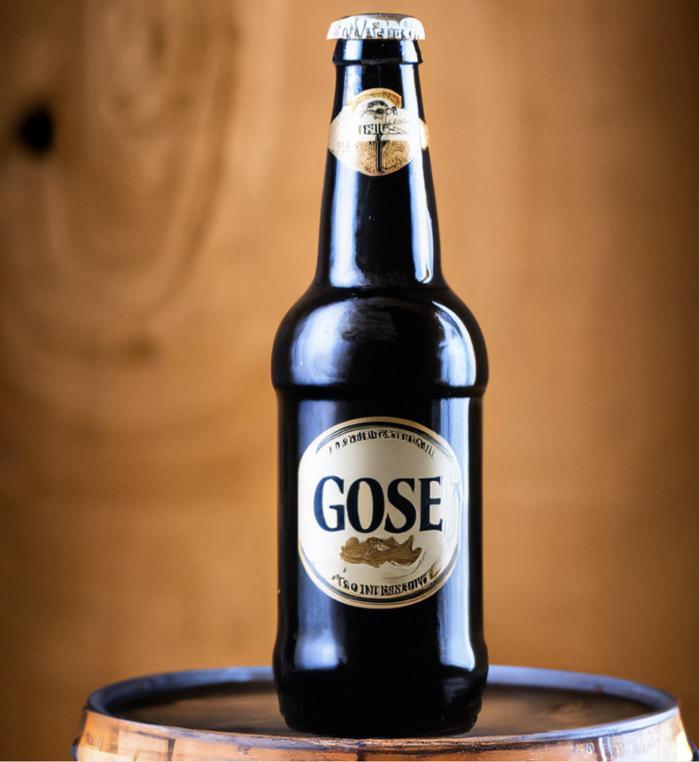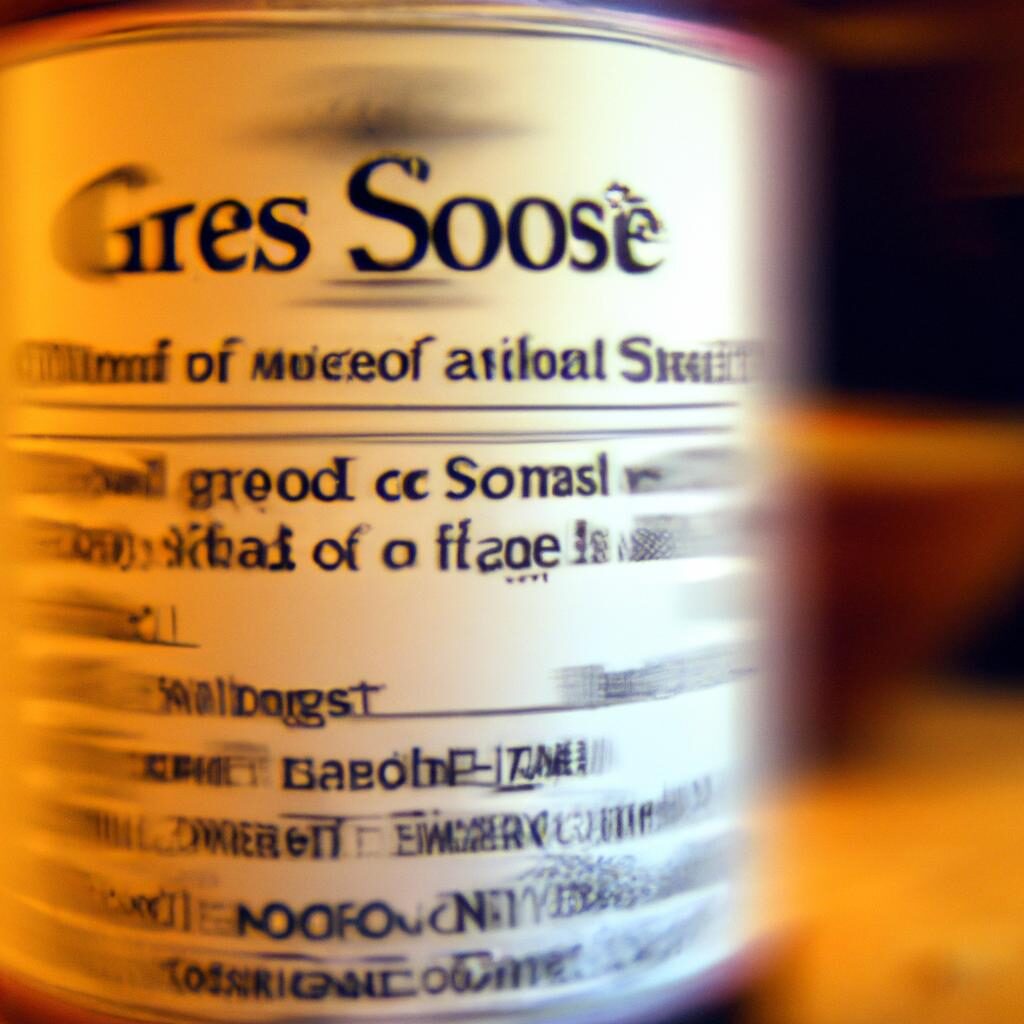Gose beer is a traditional German-style sour beer that has been gaining popularity in recent years. With its unique combination of flavors and ingredients, many people are curious about the nutritional aspects of this refreshing brew.
Are Gose beers nutritious? Gose beers can be considered a nutritious choice for beer enthusiasts, as they contain essential minerals like sodium, potassium, and calcium, as well as being a good source of antioxidants.
In this blog post, we will dive deep into the world of Gose beer and explore its nutrition facts, brewing process, and much more.
1. The Origins of Gose Beer
Gose beer has a long history dating back to the early 16th century in the town of Goslar, Germany. The name “Gose” comes from the river Gose that runs through the town. The beer was initially brewed with the naturally occurring water from the river, which contains a high concentration of minerals like salt and coriander. These minerals give Gose beer its unique flavor profile.

Gose Beer in Modern Times
Today, Gose beer is experiencing a resurgence in popularity, with many craft breweries experimenting with different ingredients and flavors. This has led to a wide variety of Gose beers available on the market, ranging from traditional German-style Goses to more experimental and fruit-infused concoctions.
2. Gose Beer Ingredients
Gose beer is brewed with a combination of ingredients that set it apart from other beer styles. These ingredients contribute to its unique flavor and nutritional properties.
The main ingredients include:
- Pilsner malt
- Yeast
- Wheat malt
- Salt
- Coriander
- Lactic acid bacteria
You will usually not find the list of ingredients on the beer, but this is the usual overall composition.

3. The Brewing Process of Gose
The brewing process for Gose beer is similar to that of other beers, with a few key differences. The most notable difference is the addition of lactic acid bacteria during fermentation, which gives Gose beer its characteristic sourness.
1.Mashing: The grains (usually a mix of Pilsner and wheat malt) are mixed with hot water to create a mash. This process extracts the sugars from the grains and converts them to fermentable sugars.
2.Lautering: The liquid, now called wort, is separated from the grain solids.
3.Boiling: The wort is boiled, and hops are added for bitterness.
4.Fermentation: The wort is cooled, and yeast and lactic acid bacteria are added. The yeast converts the sugars into alcohol, while the lactic acid bacteria produce lactic acid, giving the beer its sourness.
5.Conditioning: Salt and coriander are added to the beer, which is then allowed to age and develop its flavors.
6.Packaging: The beer is bottled or kegged and is ready for consumption.
4. Nutritional Content
Gose beer can be considered a nutritious beverage due to its unique combination of ingredients.
Calories
Gose beers generally have a lower alcohol content, ranging from 4-5% ABV, which means they contain fewer calories compared to higher ABV beers. On average, a 12-ounce serving of Gose beer contains around 150 calories.
Minerals
As mentioned earlier, Gose beer contains essential minerals like sodium, potassium, and calcium. Sodium and potassium are electrolytes that help maintain proper hydration and muscle function, while calcium is essential for strong bones and teeth.
Antioxidants
Gose beer is also a good source of antioxidants, which help protect the body from the damaging effects of free radicals. The antioxidants in Gose beer come from various sources, including the hops, malt, and yeast.
5. Health Benefits
Drinking Gose beer in moderation can have several health benefits due to its nutritional content.
- Hydration: The electrolytes in Gose beer can help maintain proper hydration, especially during hot summer months.
- Bone Health: The calcium content in Gose beer can contribute to maintaining strong bones and teeth.
- Antioxidant Properties: The antioxidants in Gose beer can help protect the body from the harmful effects of free radicals, potentially reducing the risk of chronic diseases.
- Probiotics: Many bacterial in the lactobacillus family are considered probiotics, meaning that they promote your gut health by competing with harmful bacterial and by producing short chained fatty acids like lactic acid.
6. Taste Profile
Gose beer is known for its unique taste, which is a combination of sour, salty, and herbal flavors.
The sourness comes from the lactic acid produced during fermentation, while the salt and coriander add a distinct savory and herbal aspect to the beer.

Some modern Gose beers also include fruit additions, which can add sweetness and additional flavor complexity.
7. Aroma
The aroma of Gose beer is typically a mix of fruity, spicy, and herbal notes. This comes from the combination of the lactic acid bacteria, the coriander, and any fruit additions that may be present. The aroma can be quite complex and enticing, making Gose beer an enjoyable sensory experience.
8. Appearance
Gose beer is usually a pale yellow to light gold color, with a hazy appearance due to the high wheat content. The beer typically has a moderate to high level of carbonation, which creates a fluffy, white head that dissipates quickly.
9. Food Pairings
Gose beer pairs well with a variety of foods, thanks to its unique flavor profile. Some excellent food pairings for Gose beer include:
- Seafood, such as shrimp or oysters
- Grilled vegetables
- Salty snacks like pretzels or chips
- Tangy cheeses, like feta or goat cheese
- Spicy dishes, as the sourness can help cut through the heat
Conclusion
In conclusion, Gose beer is not only a delicious and refreshing beverage but also a nutritious one, thanks to its unique combination of ingredients. Here are ten facts about Gose beer nutrition to remember:
1. Gose beer has a long history dating back to the 16th century.
2. It is brewed with a combination of Pilsner malt, wheat malt, salt, coriander, and lactic acid bacteria.
3. The brewing process includes the addition of lactic acid bacteria during fermentation, giving the beer its sourness.
4. Gose beer is lower in calories compared to higher ABV beers, averaging around 150 calories per 12-ounce serving.
5. It contains essential minerals like sodium, potassium, and calcium.
6. Gose beer is a good source of antioxidants, which come from the hops, malt, and yeast.
7. Drinking Gose beer in moderation can have health benefits, such as maintaining proper hydration and supporting bone health.
8. The taste profile of Gose beer is a combination of sour, salty, and herbal flavors.
9. Its aroma is a mix of fruity, spicy, and herbal notes.
10. Gose beer pairs well with a variety of foods, including seafood, grilled vegetables, salty snacks, tangy cheeses, and spicy dishes.




